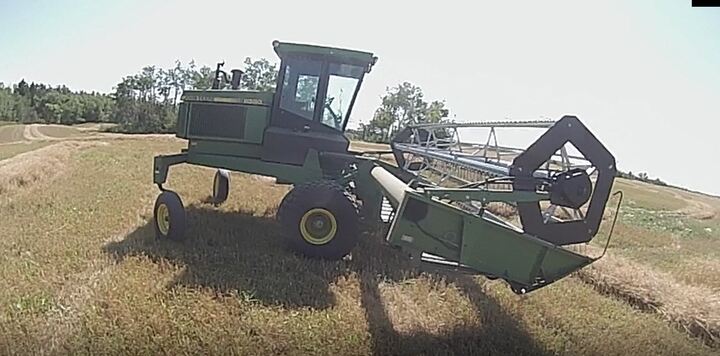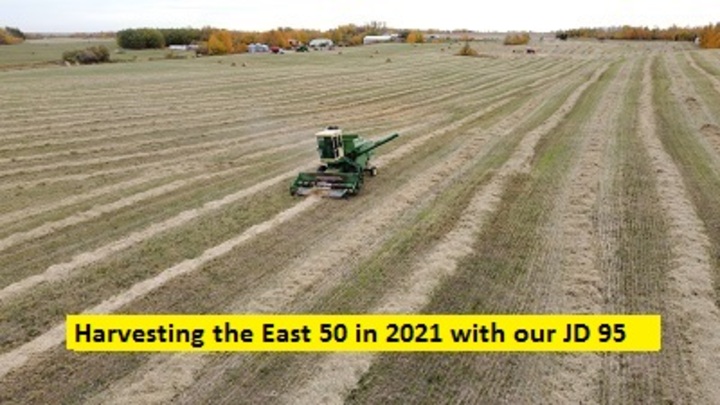rusty6
Well-known Member
- Location
- East central Sask.
Got a bit of video swathing wheat today. The crop is a little light and short in places so I'm using the double swath feature to put two 21 foot swaths side by
side so I can put 42 feet through the combine. It will save a lot of turning and time when picking up the swaths with the pull type combine. . The little John
Deere diesel is very economical. Ran 20 hours on a tank of fuel and it took just about 25 gallons diesel to refill.

Swathing Wheat
side so I can put 42 feet through the combine. It will save a lot of turning and time when picking up the swaths with the pull type combine. . The little John
Deere diesel is very economical. Ran 20 hours on a tank of fuel and it took just about 25 gallons diesel to refill.

Swathing Wheat


